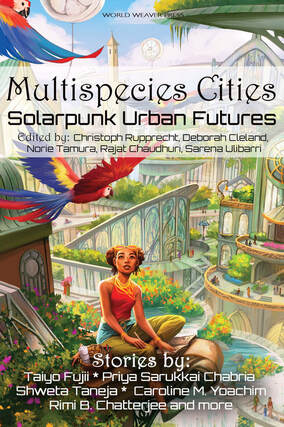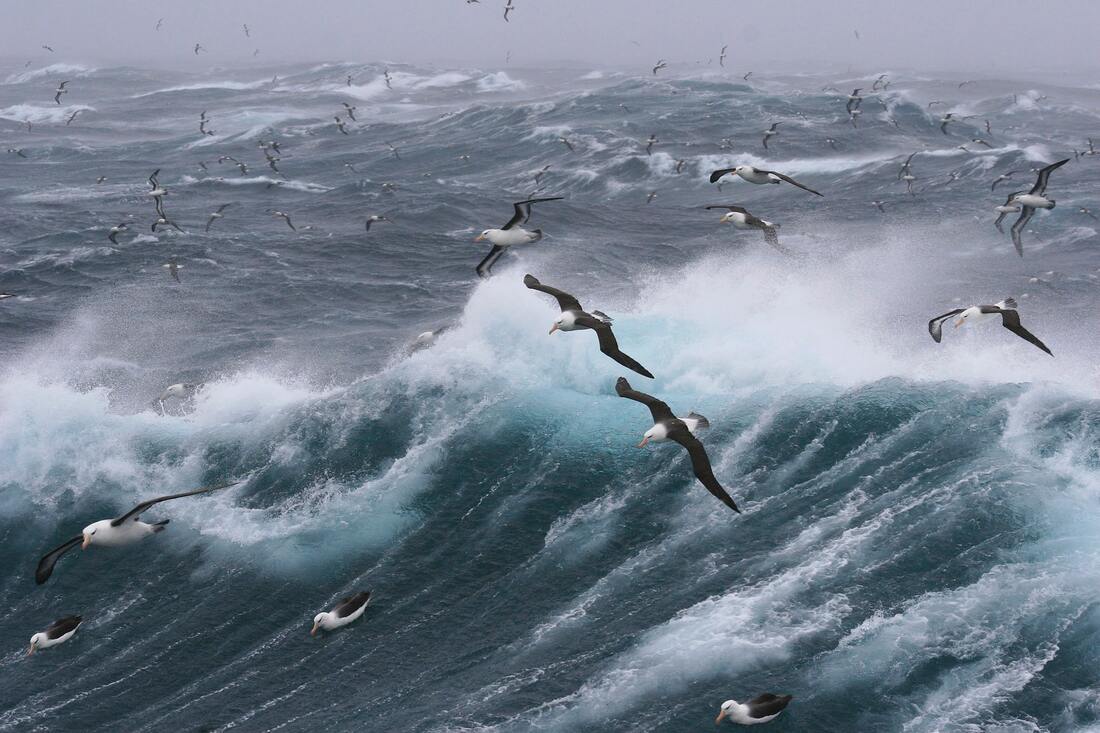 Guest Blog by D.A. Xiaolin Spires I’m sure many of us have come across seagulls flying across boardwalks, littering their droppings all over benches, railings, the ground, etc.. They’re scavenging for French fry remains, pecking at cardboard boxes or diving towards garbage cans. Some of these ‘pests’ even take food directly from people’s hands, engendering fits of alarm by unsuspecting meal-buyers about to take a bite… only to have their Philly cheese steak (or insert other food item here) snatched away from them! Seen as pests, seagulls scour the coasts for easy pickings. Their large numbers at such touristy spots belie the greater narrative of dwindling numbers of seabirds across the globe more generally. Given the seagull's ubiquity at touristy spots, soaring and diving for people's leftovers, it's possible that some people haven’t considered the wider notion of seabirds' roles in their ecosystems and the global impact of their decline. They deposit guano as a which helps cycle nutrients and organically fertilize marine habitats, including coral reefs. The stark reality of the decline of seabirds inspired this story. An academic article in Plos One described the near 70% decline of seabirds from 1950 to 2010. According to Audubon science, “two thirds of seabirds are at risk of extinction from climate change.” Despite the seagull’s bad reputation on board walks as a nuisance, seabirds more generally play a critical part in the marine ecosystem. Threats to seabirds include equipment left behind from the fishing industry, such as gillnets, longline hooks and trawling nets. In addition to getting ensnared in these ghost nets, seabirds also face another existential threat: starvation from disappearing food in the sea. With this dire data on hand regarding these majestic animals, a story began to form in my head. I thought about these soaring creatures and the adverse effect of human industrial activity on the wellbeing of these feathered fauna. I paired this line of thinking with a persistent idea of human-made art as evanescent and transient; something that would not endure over years and decades, but like all organisms, would decay and became part of the ecosystem itself. I was spending a good amount of time watching birds with some avid birders. Their keen interest in the welfare of various species and their attention to the details of the birds' varied social lives intrigued me. From these disparate but intersecting thoughts, the story "The Exuberant Vitality of Hatchling Habitats" was born. D.A. Xiaolin Spires steps into portals and reappears in sites such as Hawai‘i, NY, various parts of Asia and elsewhere, with her keyboard appendage attached. Her work appears or is forthcoming in publications such as Clarkesworld, Analog, Strange Horizons, Nature, Terraform, Uncanny, Fireside, Galaxy’s Edge, StarShipSofa, Andromeda Spaceways (Year’s Best Issue), Diabolical Plots, Factor Four, Lady Churchill’s Rosebud Wristlet, Grievous Angel, Toasted Cake, Pantheon, Outlook Springs, ROBOT DINOSAURS, Shoreline of Infinity, LONTAR, Mithila Review, Reckoning, Issues in Earth Science, Liminality, Star*Line, Polu Texni, Eye to the Telescope, Liquid Imagination, Gathering Storm Magazine, Little Blue Marble, Story Seed Vault, and anthologies of the strange and beautiful: Deep Signal, Ride the Star Wind, Sharp and Sugar Tooth, Broad Knowledge, Future Visions and Battling in All Her Finery. Select stories can be read in German, Spanish, Vietnamese, Estonian and French translation. She can be found on Twitter: @spireswriter and on her website: daxiaolinspires.wordpress.com.
0 Comments
Your comment will be posted after it is approved.
Leave a Reply. |
World Weaver PressPublishing fantasy, paranormal, and science fiction. Archives
February 2024
|
- Home
-
Books
-
All Books
>
- Beyond the Glass Slipper
- Bite Somebody
- Bite Somebody Else
- Black Pearl Dreaming
- Cassandra Complex
- Causality Loop
- Clockwork, Curses, and Coal
- Continuum
- Corvidae
- Cursed: Wickedly Fun Stories
- Dream Eater
- Equus
- Fae
- Falling of the Moon
- Far Orbit
- Far Orbit Apogee
- Fractured Days
- Frozen Fairy Tales
- Glass and Gardens: Solarpunk Summers
- Glass and Gardens: Solarpunk Winters
- Grandmother Paradox
- Grimm, Grit, and Gasoline
- Haunted Housewives
- Heir to the Lamp
- He Sees You When He's Creepin': Tales of Krampus
- Into the Moonless Night
- Jack Jetstark's Intergalactic Freakshow
- King of Ash and Bones (ebook)
- Krampusnacht
- Last Dream of Her Mortal Soul
- Meddlers of Moonshine
- Mothers of Enchantment
- Mrs Claus
- Multispecies Cities
- Murder in the Generative Kitchen
- Recognize Fascism
- Scarecrow
- Sirens
- Shards of History
- Shattered Fates
- Skull and Pestle
- Solarpunk (Translation)
- Solarpunk Creatures
- Solomon's Bell
- SonofaWitch!
- Speculative Story Bites
- Trenchcoats, Towers, and Trolls
- Weredog Whisperer
- Wolves and Witches
- Anthologies and Collections
- Novels
- Novellas
- Fairy Tale
- Fantasy
- Romance
- Science Fiction
- Urban/Contemporary Fantasy
- Young Adult SFF
-
All Books
>
- Blog
- About
- Contact
- Press / Publicity
- Newsletter Signup
- Privacy Policy
- Store


 RSS Feed
RSS Feed